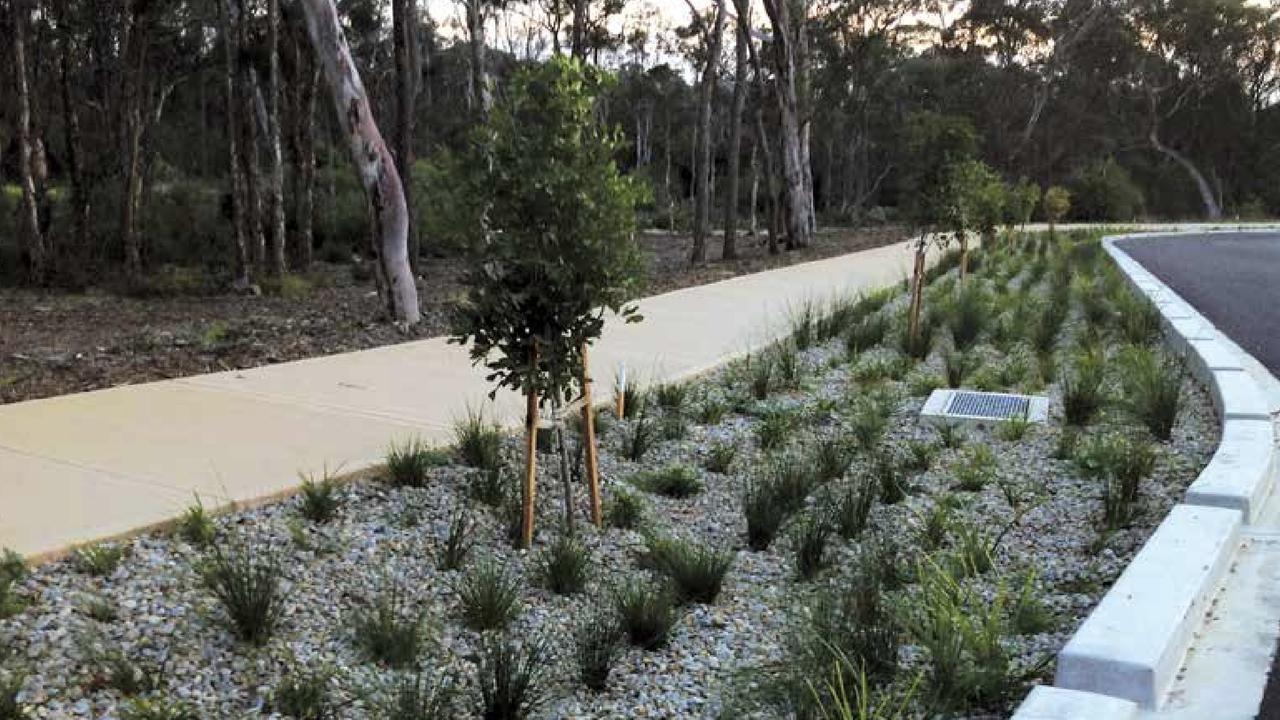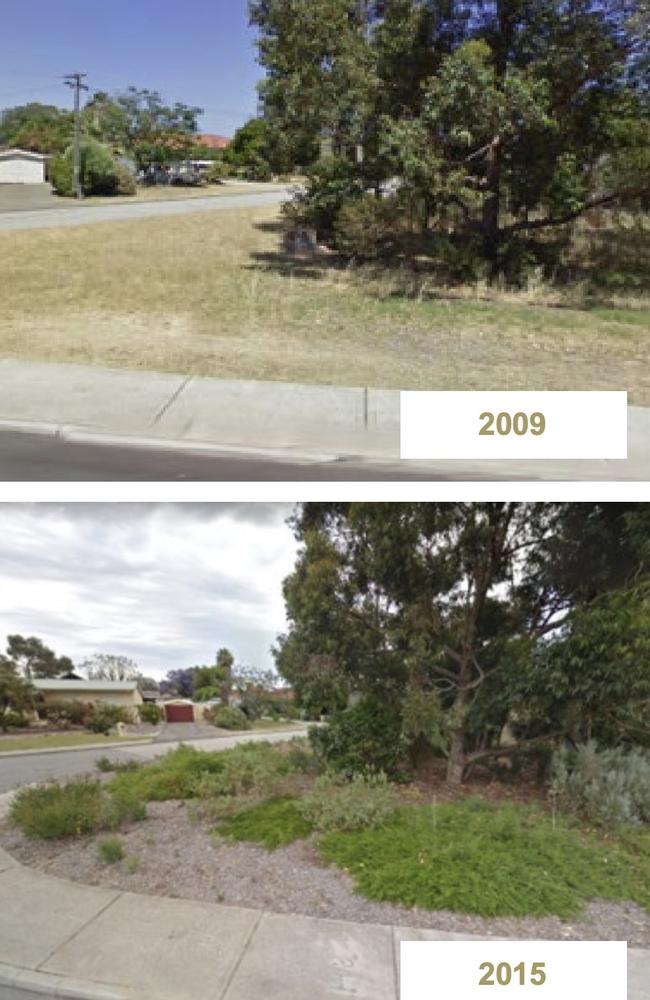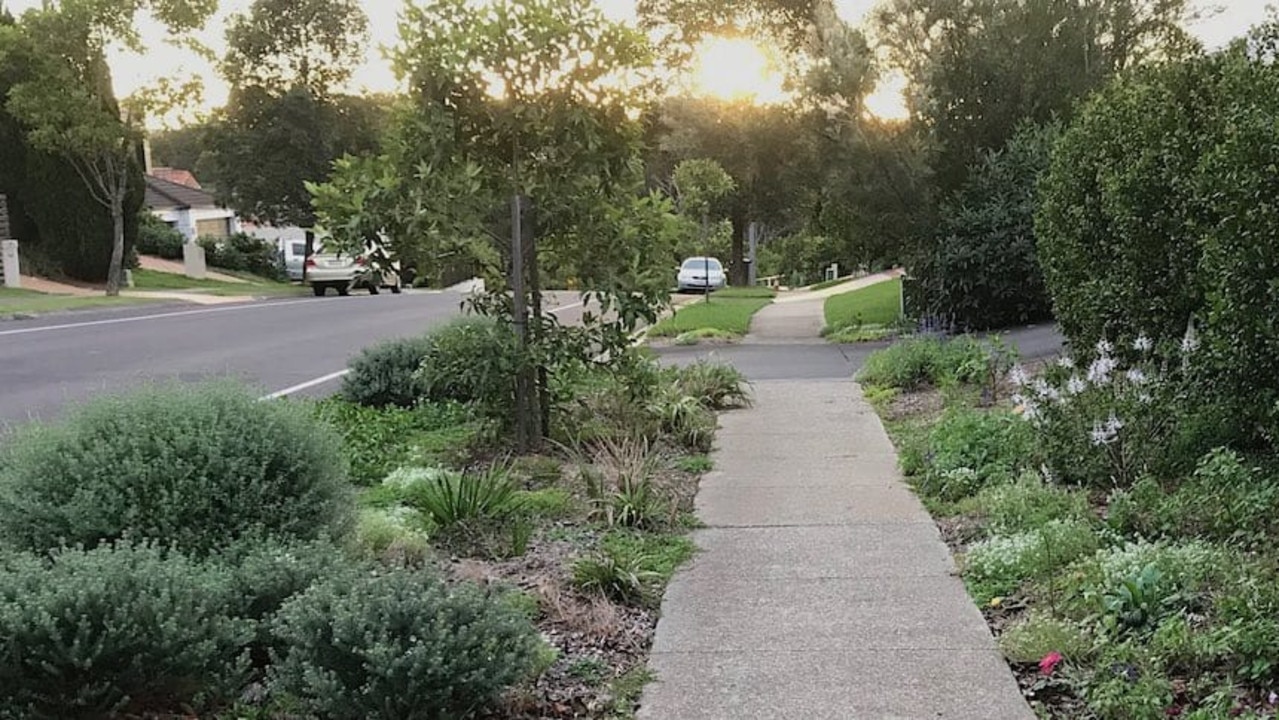Every street in Australia has a ‘useless’ feature that’s a massive missed opportunity to do something good
Experts have backed a big call to ditch a “functionally useless” part of modern Australian life, found on virtually every street across the country.
Virtually every street in Australia is home to a “bland” and “useless” feature that could be used for something that’s more impactful, environmentally beneficial and socially unifying.
Urban planner and social media star Samuel Austin, who raises issues about how we live via videos on TikTok and Instagram, has taken aim at the humble nature strip in his latest clip.
For decades, the verge between a house and the road has consisted of a strip of grass that he said “suck” and are “functionally useless” and devoid of wildlife.
“When you consider how expensive land is in cities, it’s insane how much we dedicate to this useless space,” Mr Austin said.
“Let’s stop using these old-fashioned and outdated designs.”

Instead of a strip of grass, he has called for a greater uptake of an alternative known as a ‘rain garden’ that serves a number of important purposes.
They’re aesthetically pleasing, they create a more diverse local ecosystem, attract wildlife, and most importantly, act like miniature wetlands.
“Rain gardens filter a lot of pollutants from water by using a combination of specific plant species and soils to help soak and filter out pollutants.”
When it rains, pesticides, motor oil and other pollution get flushed into stormwater systems and into creeks and rivers.

In the United States, research suggests 70 per cent of pollution in waterways comes from rainwater run-off, he explained. Closer to home, swimmers are unable to enter the water at Balmoral Beach or Rose Bay in Sydney after it rains because of pollution.
When the new northwestern Sydney suburb of North Kellyville was being developed, authorities mandated the use of rain gardens on verges as well as swales, which are shallow channels that facilitate water run-off, as part of a management plan.
The cost of building and maintaining them has been roughly on par with a traditional nature strip.

A growing number of local councils across the country are adapting policies to allow residents to replace the strip of lawn in front of their homes.
Gregory Moore from the University of Melbourne’s School of Agriculture, Food and Ecosystem Sciences said there are two movements at play.
“One is what you see in that TikTok, turning a verge into a rain garden,” Dr Moore said.
“Those are a little more complex because they’re actually part of a stormwater management system. They take up rainwater and can clean-up any pollution. Plus, we’ve done research on this – we found that some of the pollutants even act as fertiliser.
“The second push more recently is the idea of a verge garden, or a more complex nature strip. They create greater plant diversity than just a simple lawn, they encourage extra wildlife, and they can also have a greater cooling effect.”

Climate change is forcing a rethink of how cities are able to respond to higher temperatures and more frequent storm activity.
“Over the past decade or so, there’s been this realisation that if we’re going to deal with the development of cities, the warming of climates, what happens in heatwaves, what happens in storm events, we have to take every opportunity we can.
“Local councils are beginning to realise that if they don’t, their suburbs will become very challenging places.
“You can see that nature strips do have a lot of potential, as either rain gardens or more diverse verge gardens.”
However, it’s not as simple as someone planting anything and everything on the verge outside their house, he said.
“There are some issues to consider. For example, if you’re on a busy street, you might not be able to build up the verge with plants because of safety issues. But really, almost all of the potential issues can be dealt with if you do it properly.”
Brisbane resident Gayle Dallaston became a verge garden advocate when the council changed its rules in 2019 to allow locals to plant them.


“When I did mine, I realised the verge is a very special place,” Ms Dallaston said.
“You have different sorts of conversations on the verge. It’s the commons. It’s that shared space. My neighbours would come up and say, ‘What are you doing?’ And I’d tell them, I’m fed up with mowing the grass, I’m doing this garden.
“It shapes them. I got to know more people in my suburb within the couple of months I did the transformation than I had for years beforehand.”
Ms Dallaston launched the Shady Lanes Project, connecting people to create their own cooler, greener and more sustainable neighbourhoods.
“If just half the residents of our city made this small change from grass to garden, supporting the street trees planted by councils, it would add hundreds of hectares of shade and biodiverse habitat,” she explains on her website.

“Councils are already planting street trees to shade and cool our cities. Residents already mow the grass. All we need to do is work together with a common purpose.”
However, she concedes some people are hesitant to take the plunge because they’re not green thumbs and are worried about making a mistake.
“You know, just experiment, make it up. There’s a bit of inertia, nobody wants to be the first one in the street.
“I came to the conclusion that if we’re going to scale this, it has to be native plants that support the streets, while working with your local council. I’m absolutely adamant with people – stick to your council’s policy. No guerrilla gardening.”




